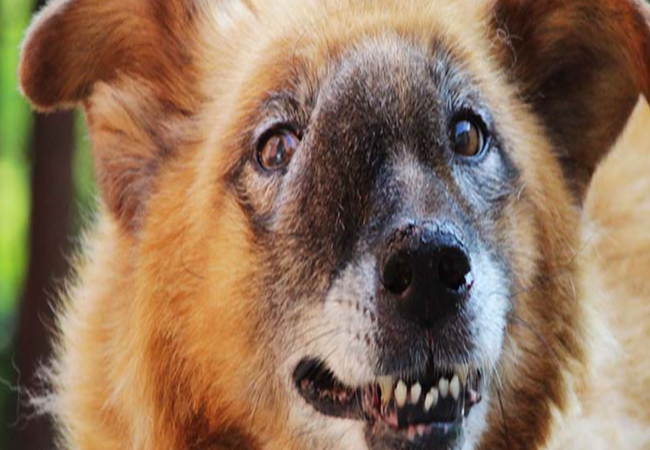Nasal Tumors in Dogs – Vet‑Led Guide 2025 🐶👃🩺

In this article
Nasal Tumors in Dogs – Vet‑Led Guide 2025 🐶👃🩺
By Dr. Duncan Houston BVSc
Hi, I’m Dr Duncan Houston, BVSc, founder of Ask A Vet. Nasal tumors—abnormal tissue growths in the nose or sinuses—are serious and often malignant. Early recognition, accurate diagnosis, and comprehensive treatment are essential. In this deep-dive 2025 article, we’ll explore types, clinical signs, diagnostics, treatment approaches like radiation and surgery, prognosis, and how to support your furry companion at home. Let’s breathe easy together. 💙
📘 What Are Nasal Tumors?
Nasal tumors are abnormal growths that arise in the nasal cavity or paranasal sinuses. They account for ~1–2% of canine cancers, and around 80% are malignant. The most common types include:
- Adenocarcinoma: the most frequent nasal malignancy.
- Squamous cell carcinoma (SCC): affects mucosal lining, may involve nasal planum.
- Undifferentiated carcinoma: aggressive form with poor differentiation.
- Sarcomas: including chondrosarcoma and osteosarcoma, are slightly less common.
🚩 Risk Factors & Causes
- Long-nosed breeds in urban environments—chronic inhalation of pollutants/tobacco smoke.
- Male dogs affected more commonly; the average diagnosis age ~9–10 years.
- Potential environmental triggers include coal combustion, kerosene, and flea sprays.
🧠 Who Is Affected?
Typically affects older dogs (~9–10 years), any breed can be impacted, but long-nosed, urban dogs (e.g., Collies, Terriers, Retrievers) are at higher risk.
🚨 Clinical Signs to Watch For
- Chronic unilateral→bilateral nasal discharge (purulent or bloody).
- Sneezing, noisy (stertorous) breathing, and nasal congestion.
- Epistaxis (nosebleeds) especially in advanced cases.
- Facial swelling or deformity from tumor/bone invasion.
- Lethargy, decreased appetite, and weight loss from discomfort or impaired smell.
- Rare neurological signs (seizures, vision changes) if the tumor invades the skull.
🔍 How Is It Diagnosed?
- History & exam: investigate chronic nasal signs unresponsive to antibiotics or antifungals.
- Imaging: CT is gold standard to assess tumor extent and bone involvement. Skull X-rays useful if CT is unavailable.
- Rhinoscopy & biopsy: direct visualization and tissue sampling for histology.
- Staging: thoracic radiographs or CT, lymph node aspirates, abdominal ultrasound—check for metastasis.
💉 Treatment Options
1. Radiation Therapy (Primary Standard)
- Definitive (daily fractions over ~3–4 weeks) yields best outcomes—remission ~428 days, median survival 12–24 months.
- Stereotactic (high-dose, fewer sessions) is also effective (~8–18 months median survival).
- Palliative protocols offer symptom relief if cure isn’t feasible (~259 days median survival).
2. Surgery
Rarely possible due to invasive nature, but radical resection (rhinotomy) may be considered for small, front-of-nose tumors in referral centers.
3. Chemotherapy & Targeted Agents
- Alone: limited benefit (~30% response rate).
- Used alongside radiation may improve outcomes or for palliative care.
- Agents like Palladia may be considered experimentally.
4. Supportive/Palliative Care
- Pain management (NSAIDs, opioids).
- Antibiotics for secondary infections.
- Nasal saline rinses to help clear discharge.
- Nutrition support if anosmia/ram eating issues arise.
📅 Prognosis & Staging
Prognosis depends on stage and treatment:
- Supportive care only: ~2–3 months median survival.
- Definitive radiation: unilateral, no bone involvement → ~23 months; bone/orbit involvement → ~15 months; cribriform invasion → ~6–10 months.
- Metastasis at diagnosis: poorer prognosis (~3.5 months).
- Recurrence of epistaxis or incomplete remission = shorter survival (~4 months vs ~16 months).
🏡 Home Care & Owner Tips
- Monitor breathing patterns and nasal discharge daily.
- Use saline rinses to reduce crusting/discharge.
- Ensure pain relief and follow-ups as instructed.
- Maintain good nutrition and palatable foods if smell lost.
- Keep the environment clean to reduce infection risks.
- Support quality of life with gentle activities and affection.
- Stay in contact with your vet/Ask A Vet for symptom changes.
🐾 Ask A Vet
Need advice on symptom control, nasal care, or breathing aids? Connect with Ask A Vet anytime. Find humidifiers,
✨ Key Takeaways
- Nasal tumors are serious, typically malignant and locally destructive.
- Signs include persistent discharge, sneezing, nosebleeds, and facial swelling.
- Accurate diagnosis requires CT, rhinoscopy, biopsy, and staging.
- Radiation therapy is gold-standard; combined approaches yield the best results.
- Life expectancy ranges from months (no treatment) to 1–2+ years (with therapy).
- Supportive home care is crucial to quality of life.
- Early detection, treatment, and daily care give your dog the best chance for comfort and longevity. 🐾❤️
If your dog has chronic or bloody nasal discharge, facial swelling, or noisy breathing, don’t wait. Contact your veterinarian or Ask A Vet. Early diagnosis and prompt treatment offer the best chance for ease and breathing well. 🩺






